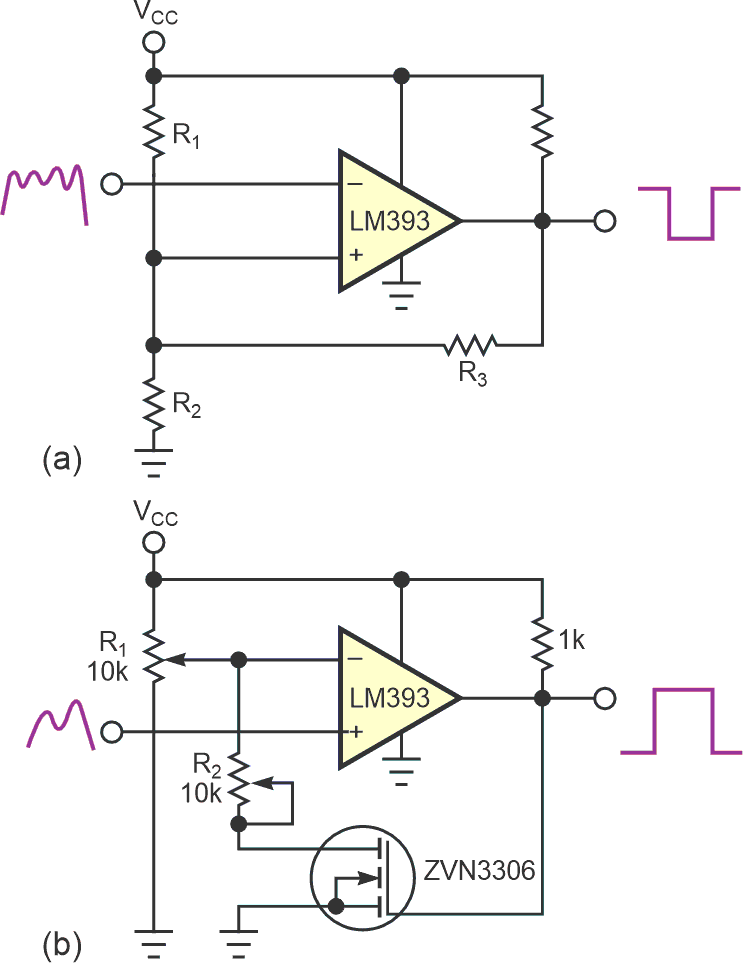The classical Schmitt trigger circuit that you'll find in textbooks provides some noise immunity, such as for the front end of magnetic pickup in position-sensor circuits (Figure 1a). You adjust the two threshold levels using R1 and R2 or R2 and R3. The circuit works acceptably but has two problems. First, each resistor affects both levels, making the circuit adjustment an iterative process. Second, the op amp's current-sinking ability limits your choices for R3 and, hence, your ability to adjust the circuit.
The improved trigger circuit in Figure 1b has independently adjustable levels; you first adjust R1 and then R2. The circuit also eliminates the sensitivity to the op amp's current-sinking capability.
